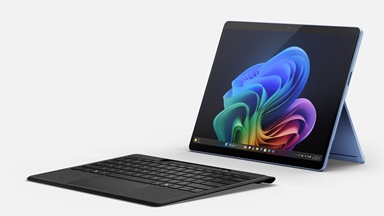Loading component...
At a glance
By Adam Turner
Choosing the perfect hybrid laptop begins with striking a balance between size and weight. A 13.3- or 14-inch screen is typically the sweet spot between portability and useability.
Go much smaller, and the screen and keyboard can become too cramped. Much larger, and the device becomes too heavy to carry around all day.
Some hybrid laptops use the traditional clamshell design, allowing the user to fold back the keyboard and use the touchscreen like a tablet. Alternatively, some tablet-style devices support detachable keyboards, so they can double as a laptop.
A few hybrids discard the physical keyboard in favour of two touchscreens, with the ability to call up an on-screen keyboard for typing.
Most hybrid laptops that run Microsoft Windows 11 contain an Intel or AMD processor. Some feature Intel’s EVO badge, meaning they are optimised for responsive performance, long battery life and fast charging, all within a thin and light form.
Most new Copilot+ PCs feature Snapdragon processors, rather than Intel or AMD. While they enhance the performance of artificial intelligence and extend battery life, reliance on Snapdragon chips mean they run a special version of Windows 11 which supports the Microsoft Office suite, but not all third-party Windows applications. This could be a deal-breaker, depending on the workplace applications required.
Likewise, Google Chromebooks run ChromeOS rather than Windows. It doesn’t allow installation of Windows applications, but ChromeOS does support android applications from the Google Play Store, which includes some Microsoft Office applications.
Here are six hybrid laptop options.
Microsoft Surface laptop Studio 2
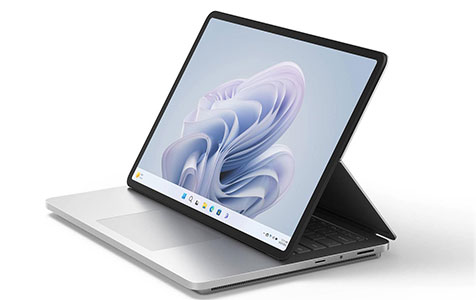
With the appearance of a traditional clamshell, this laptop’s innovative hinge lets the screen slide face-up onto the keyboard to form a tablet. The device sports a 14.3-inch touchscreen and is compatible with Microsoft’s optional Surface Slim Pen for handwriting recognition. Inside is a powerful Intel Core i7 processor and the option of NVIDIA graphics.
Microsoft Surface Pro (11th edition) Copilot+ PC
A “kickstand” lets this 13-inch tablet stand upright, but to use it like a laptop requires the optional detachable Surface Pro keyboard (and it supports the Surface Slim Pen 2).
Keep in mind, it features a Snapdragon processor. Alternatively, the Microsoft Surface Pro 10 for Business features an Intel Core Ultra 5 or 7 processor that supports all Windows applications.
Dell inspiron 14 2-in-1 laptop
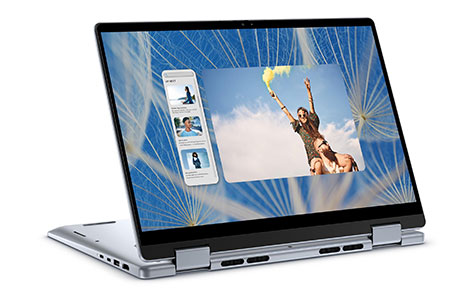
This 14-inch laptop features a hinge that lets the screen fold all the way back onto the keyboard, plus it comes with the Dell Active Pen. It has an Intel Core processor, but it is only a mid-range model, so it is not a multimedia powerhouse.
ASUS Zenbook Duo
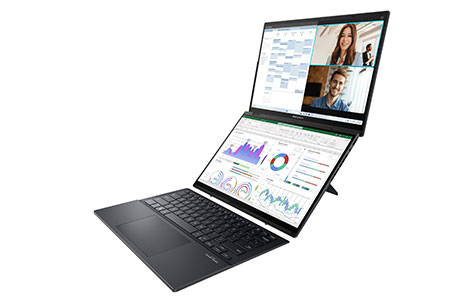
With two 14-inch OLED touchscreens, this laptop offers the choice of typing on glass or using the included detachable full-size keyboard, which attaches to one screen using magnets. The Zenbook can also act as a dual-screen display to boost productivity.
ASUS Chromebook Plus CM34 Flip
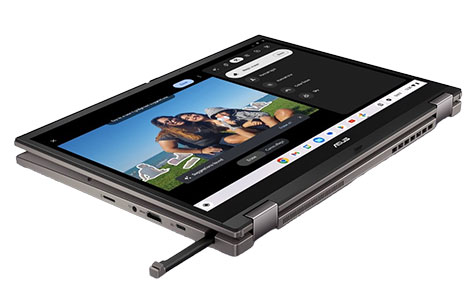
Running Google’s ChromeOS, the Chromebook’s 14-inch laptop screen folds back onto the keyboard for use in tablet mode. It also features a “garaged” slot for storing the optional stylus.
Apple iPad Pro
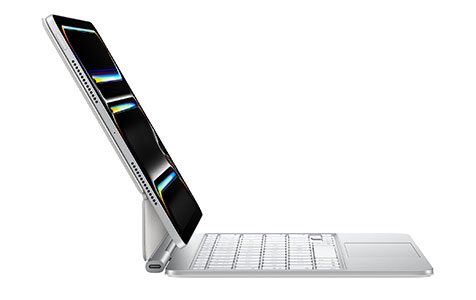
Running Apple’s iOS, this 11- or 13-inch tablet supports the optional Apple Pencil or Apple Pencil Pro. Apple’s Magic Keyboard for iPad Pro can hold up the tablet to mimic a laptop, or you can choose from a range of third-party keyboard cases.
